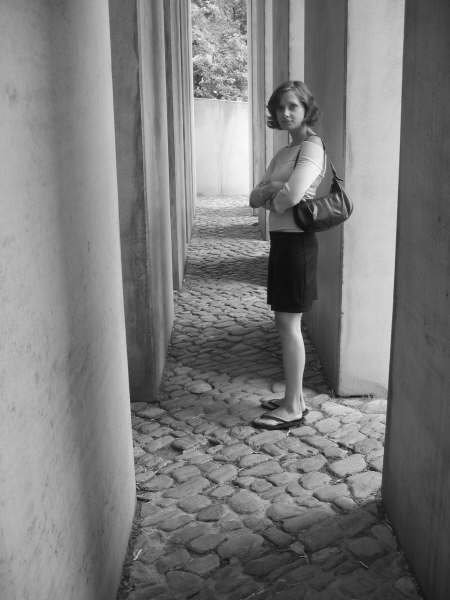The ROM is in a terrible crisis. Components of its old permanent installation literally fall off the walls at one end of the museum. At the other, construction crews assemble Libeskind's extraordinarily costly addition. Somewhere in between the embarrassingly decrepit European galleries and the plastic drop sheet that, taped up to cover a gaping hole in the wall, invites frigid February drafts and screeching construction-related noises to be an integral part of the visitor's experience, is one of the ROM's current exhibitions, Déco Lalique. "Classic. Elegant. Timeless." Indeed.
On Tuesday 6 February I visited the ROM with five UWO Art History Master's students, one U of T Art History PhD candidate, and one extremely animated UWO Professor of Art History and Museum Studies. We likely weren't representative of the 'typical' visitor group, yet a number of components of the ROM's presentation elicited such strong reactions from my group that I believe those reactions to be important.
After ascending from the temporary basement entrance, we emerged into the Samuel Hall/ Currelly Gallery (see the image below). I sincerely hope that
 "Renaissance ROM" will
"Renaissance ROM" willinvolve renovation to this Hall. It is vast, and it sits at the Museum's centre. Effectively used, it could be an impressive space. What does it currently occupy? Faux leather couches and IKEA-esque tables, mismatched in colour. Additionally, stationed around the Hall's perimeter are objects that, devoid of curatorial interpretation, only serve to confuse. Two historical murals feature medieval jousting scenes, while glass cases present such objects as personal armour, large swords, and stuffed mammals. The large Buddhist statue featured in this photograph neighbors two dinosaur skeletons. Two 14-foot glass screens in this Hall present an interactive digital exhibition on the history of philanthropy at the ROM. The concept behind the whole installation is that the Hall offers "iconic" objects that "sample the breadth of the Museum's collections."
It is an intelligent concept for an introductory hall. The first room of our Invention to Innovation exhibit employs a similar tactic, doesn't it? Our introductory room, however, features a voice. It explains to the visitor how the disparate objects in the first room are related. What's more, it makes clear that their relationship illustrates the exhibit's chief concept. It is the presence of this voice that makes our introductory room an effective, well, introduction to the exhibit and its overriding concept. It is the absence of such a voice that makes the ROM's Samuel Hall/Currelly Gallery look like an oversized attic, or a garage sale.
All members of my group agreed that, without any justification for their juxtapositioning, the exhibit of medievalising murals and armour, dinosaurs, digital technology and glassy-eyed natural history beasties made little sense. Furthermore, from a physical plant and interior design perspective, we agreed that the lighting in the Hall is dingy, and its modern panel ceiling with pot lights clashes with the stone and marble walls almost as much as the chrome couches do with the Hall's wood floor.
Has the ROM cast the Samuel Hall/Currelly Gallery aside? Is the Museum's current channeling of resources to the Michael Lee-Chin Crystal making some of its "old favourites" ineffective installations? My next post will suggest that the ROM has similarly abandoned its Samuel European Galleries. Their physical disrepair, lack of object documentation and pedagogical approach render "some of the ROM's most popular and renowned collections" unprofessional exhibitions.

No comments:
Post a Comment